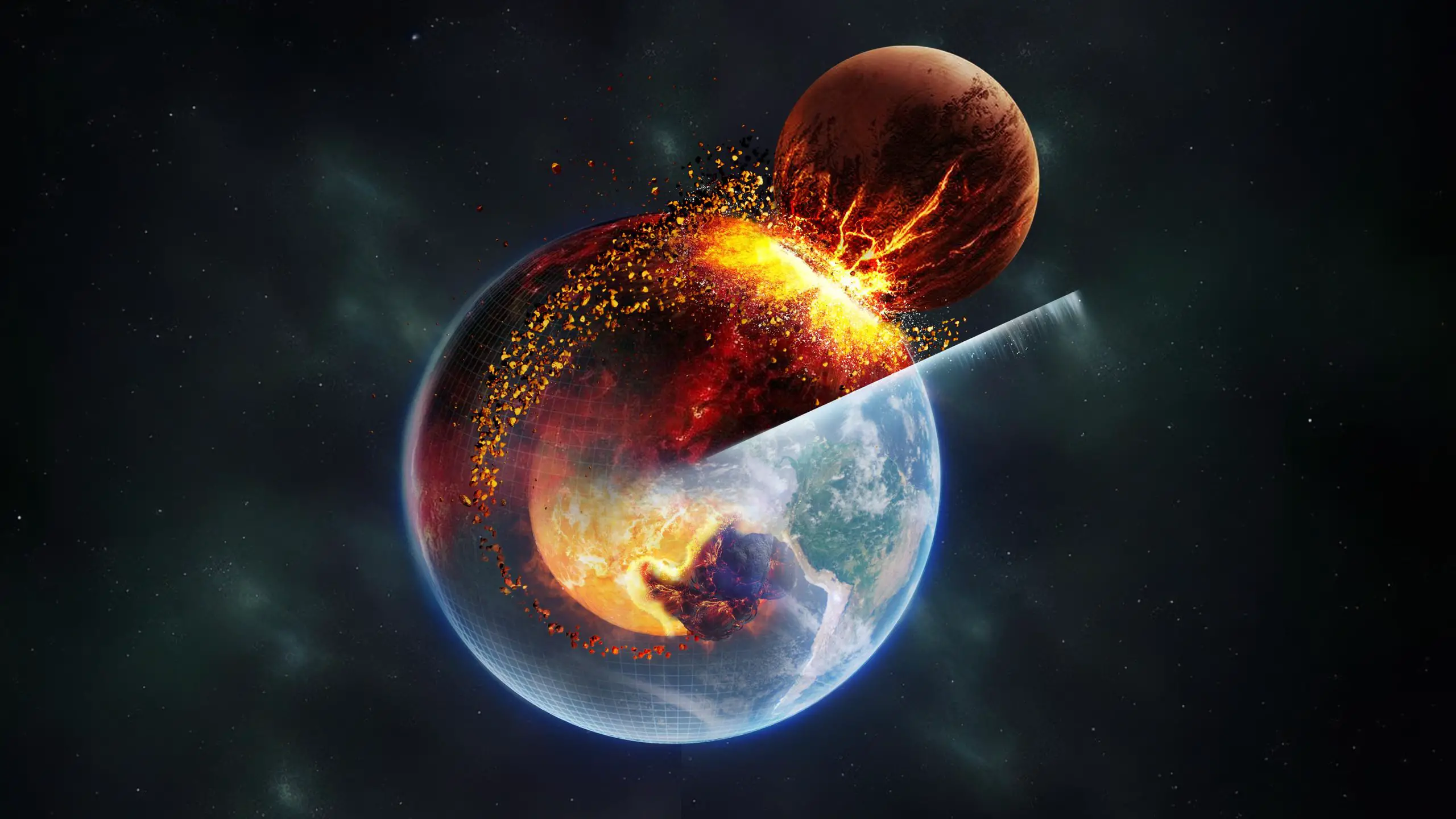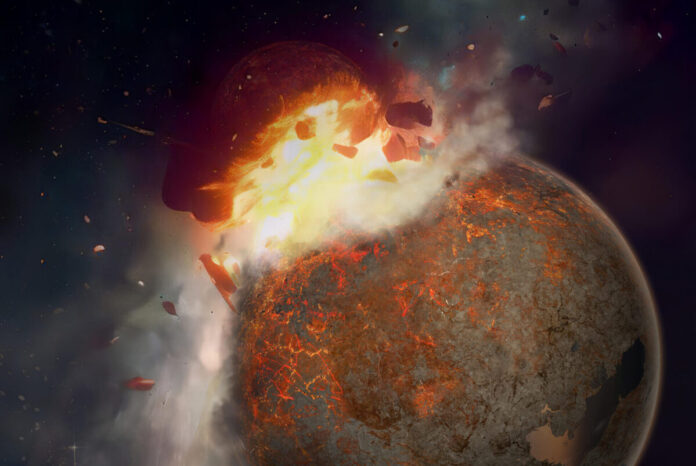In the 80s of the 20th century, geophysics researchers discovered something unusual in the depths of the Earth – two giant massifs located next to the earth’s core. These masses, located under the surface of Africa and the Pacific Ocean, are twice the size of the Moon and differ in their chemical composition from the surrounding mantle.
These mysterious masses, known as large low seismic velocity regions (or LLVPs), may be the remnants of a mysterious ancient planet. Scientists from the California Institute of Technology have suggested that these structures are all that remains of the planet Theia, which, according to hypotheses, collided with the Earth and triggered the formation of the Moon billions of years ago.
The LLVP data was obtained by observing seismic waves: as they pass through different materials inside the planet, their speed changes. This discovery helped reveal not only the cause of the formation of the Moon, but also solve a long-standing planetary mystery about the source of the LLVPs themselves.
The study was led by Qian Yuan, a postgraduate research fellow at O.K. Earl at Caltech, under the scientific direction of Paul Asimou, professor of geology and geochemistry, and Michael Gurnis, professor of geophysics and director of the institute’s Seismological Laboratory.
Their research made it clear that the massifs have increased density and are rich in iron, which determines their effect on the speed of seismic waves – hence the name “low-velocity regions”. This discovery not only provides new insight into the Earth’s internal structure, but may also be key to understanding its early history and formation.

